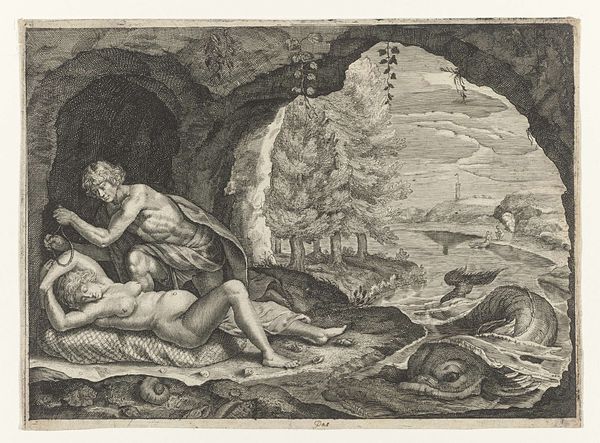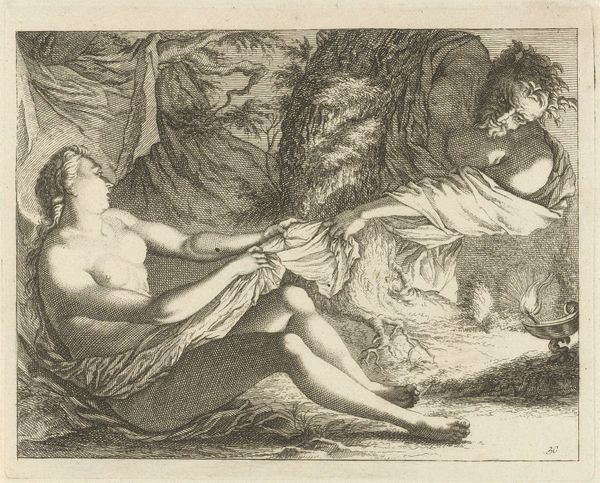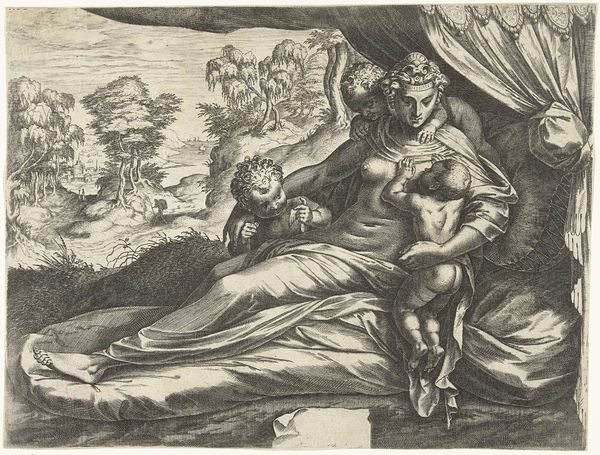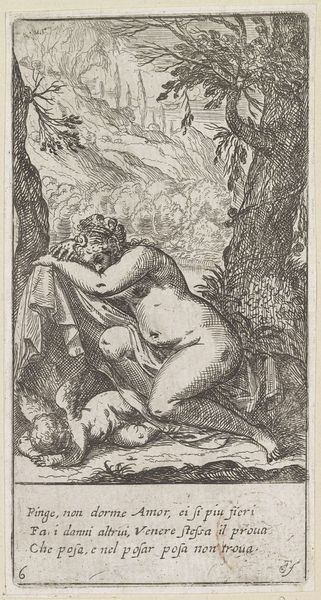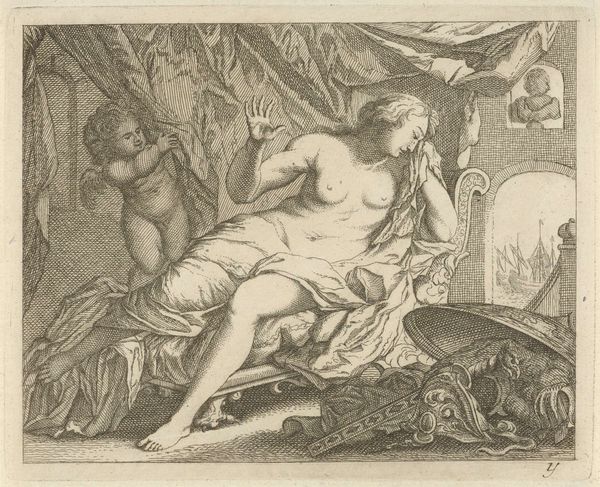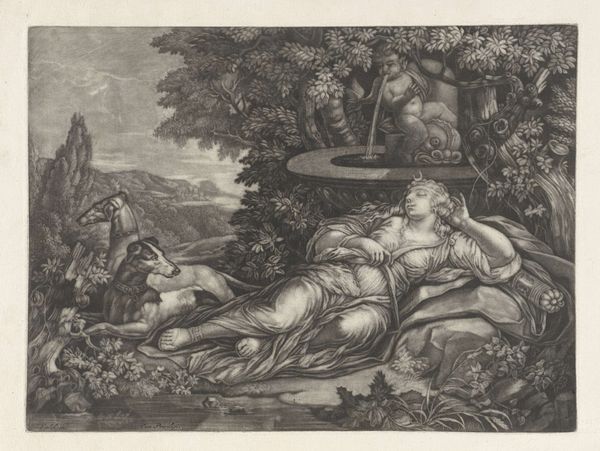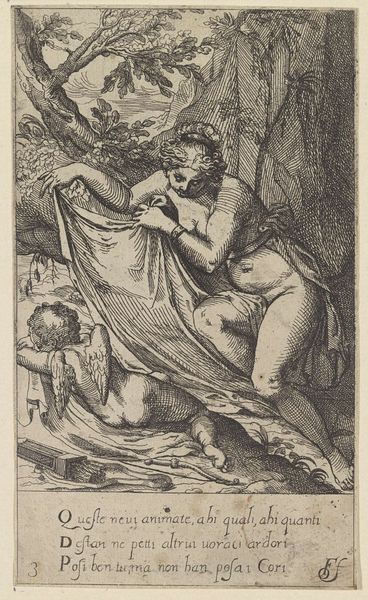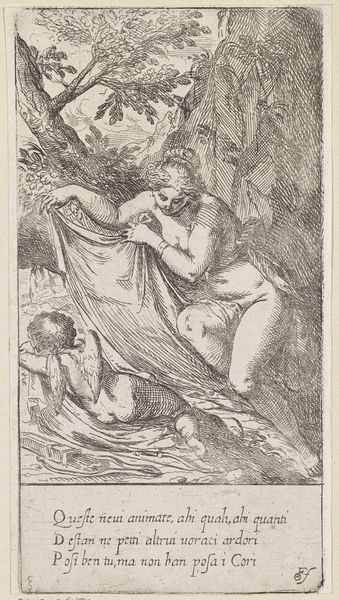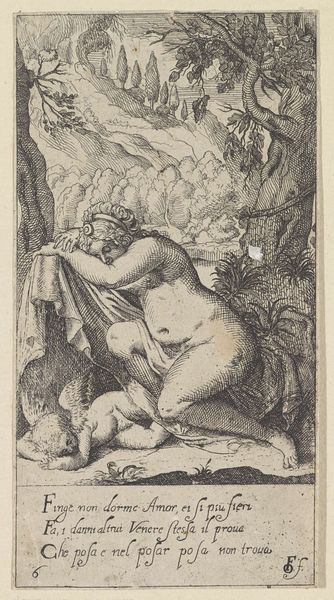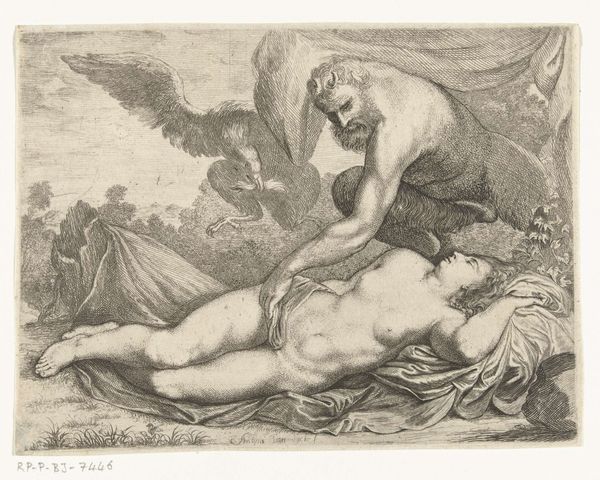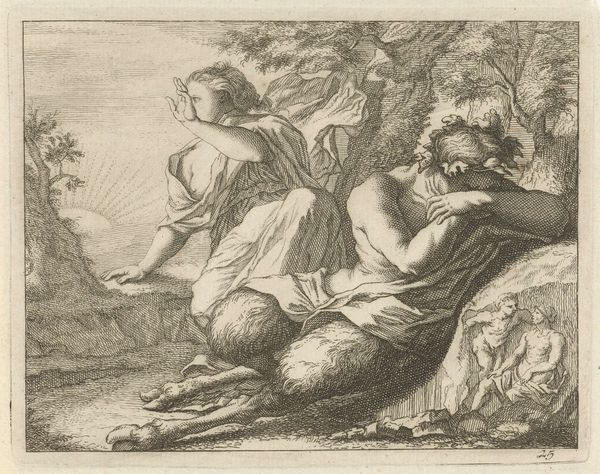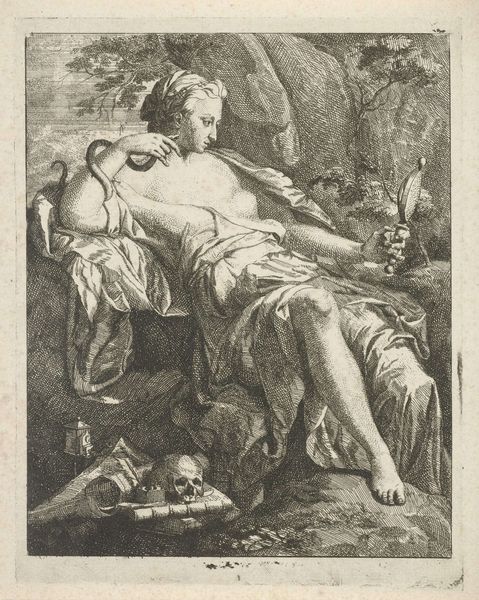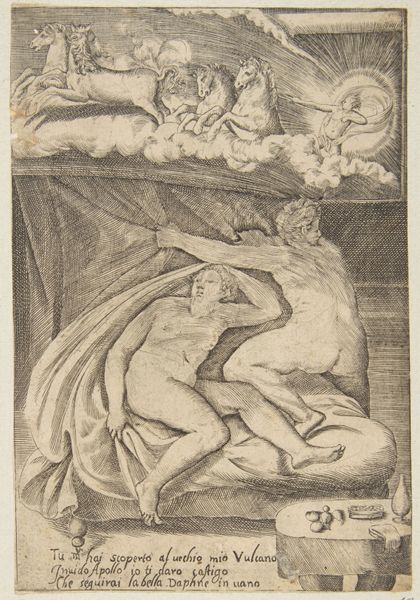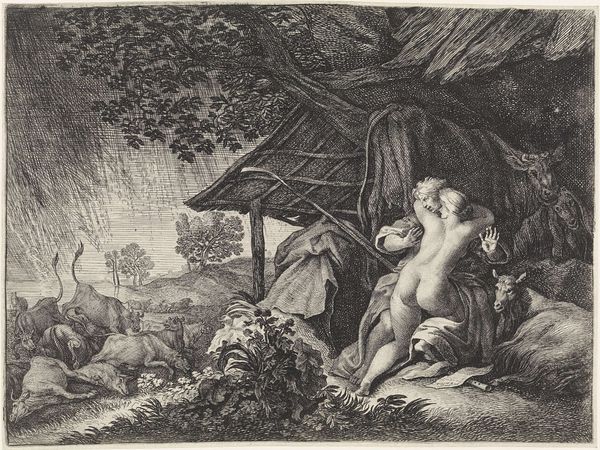
engraving
#
baroque
#
landscape
#
figuration
#
history-painting
#
engraving
Dimensions: height 127 mm, width 147 mm
Copyright: Rijks Museum: Open Domain
Curator: What strikes me first is the density of the cross-hatching, particularly around the figure of Narcissus himself. You can almost feel the pressure of the engraver's tool. Editor: Yes, it creates a really interesting contrast. The foreground feels quite claustrophobic, dominated by Narcissus and that brooding figure above him. Curator: That engraving, entitled "Narcissus," comes to us from between 1700 and 1750, created by an anonymous artist, here at the Rijksmuseum. Note how the artist employs various techniques to simulate light, texture, and depth using only the lines and marks incised onto the metal plate. Editor: Immediately I'm drawn to the narrative being visualized here, and specifically, its implications for understanding queer identity in the period of production. Curator: How so? Editor: Well, Ovid's myth already interrogates the fluidity of desire, particularly in the character of Narcissus who mistakes his own reflection for another person, thus sparking self-love. The artist is engaging with notions of identity, desire, and even performance. Narcissus becomes both the object and the subject. This blurring of boundaries speaks to broader societal anxieties about sexuality and gender that persist to the current moment. Curator: Fascinating. And, the engraver has certainly used materials to highlight Narcissus' physical presence. Look closely, how does this medium itself play a role in defining beauty and value? Think of paper making during that period, for instance—what does this tell us? Editor: Absolutely. And consider what is deemed a desirable image. The body, draped, languid, illuminated. And so we have this very intense, intimate scene, all the more arresting by being made public through the printing and circulation of these engravings. Curator: True. In essence, each copy contributes to, as much as it documents, this construction of public desire. And the social contexts of both are inseparably intertwined. Editor: Precisely, and for contemporary audiences, how can this be reread and challenged? Curator: Definitely lots to ponder here! The making of these engravings involved considerable labour and skill. Thanks to your reflections, we see more clearly how its impact also transcends technique, becoming deeply embedded in culture.
Comments
No comments
Be the first to comment and join the conversation on the ultimate creative platform.
